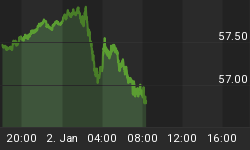Call this commentary a pundit's guide of when to "buy the dip". And all you need to do this analysis is a price chart and a momentum oscillator that measures how oversold the market may be.
First, let's take a daily price chart of the S&P500, and for our momentum oscillator, I will use a plain old Bollinger band. According to the pundits, the market is oversold and becomes a "buy" when prices tag the lower Bollinger band. Oh geez, by this analysis, I would have been buying all the way down since the market top in October, 2007.
But wait, we have weekly charts to consider. Or to put it another way, if the daily charts don't work out, the market will eventually get oversold on a weekly basis. On a weekly chart, the S&P500 first closed below the bottom Bollinger band on January 4, 2008. The calls got even louder: what a "buy" the market was back then.
But that didn't work out too well either. Oh wait another minute, we have those all important monthly charts, and boy have the bottom callers gotten louder as prices tagged the bottom Bollinger band last month.
According to the pundit's guide of when to "buy the dip", if you don't get it right on the daily charts, you always can make the call on the weekly charts. And if that fails, you always have the monthly chart. One of these dips has to work out. Doesn't it always?
And that is how I view the current price action. Prices have gotten oversold on a monthly time frame. The "calls" for "this is the bottom" have grown louder and louder. Prices have bounced. And according to the pundit's guide of when to "buy the dip", one of these oversold dips has to work out. However, at this point in time I am not sure that this one will.
Now my point here isn't to discuss the usefulness of the Bollinger band, but to show you how the noise has gotten louder and louder as prices have become oversold on a monthly time frame. The reality is this: 1) oversold on a monthly time frame doesn't happen too often; 2) sometimes it is the place to buy; 3) other times, it is not.
However, what is clear is this: failure of the bounce to materialize at this juncture is likely to lead to a protracted bear market. After all, what do the perma-bulls have left to fall on? The daily, weekly, and monthly charts didn't work out. Oh my God, head for the hills!
With regards to the market action, very little has changed from last week. The equity markets are still in a bear market; although by the official definition of some (a 20% loss from the highs), we have not met the criteria for a bear market. I view the current rally as a bear market rally, and my guess is that it will likely fizzle at or slightly above the 200 day moving average.
Bearish sentiment is unwinding. It would seem that more investors are tiptoeing back into the market. Anecdotal observations are such that we are starting to see investors recognize that no amount of bad news can keep this market down. Market breadth remains lackluster. However, rising prices on bad breadth and increasing bullish sentiment is not a recipe for sustainability. Typically (and only based upon several observations), I would expect more bearish price action over the next 4 weeks (on average) if the current set of conditions are maintained.
Price models of the S&P500 remain bearish, and this confirms the findings of an economic model that I have developed. Market participants are buying in hopes of better times ahead. However, price and economic models have yet to confirm such optimism.
To learn more about our quantitative and disciplined investment approach please visit www.thetechnicaltake.com and sign up for our free weekly newsletter and downloads.
Guy M. Lerner may be reached at guy@thetechnicaltake.com
















